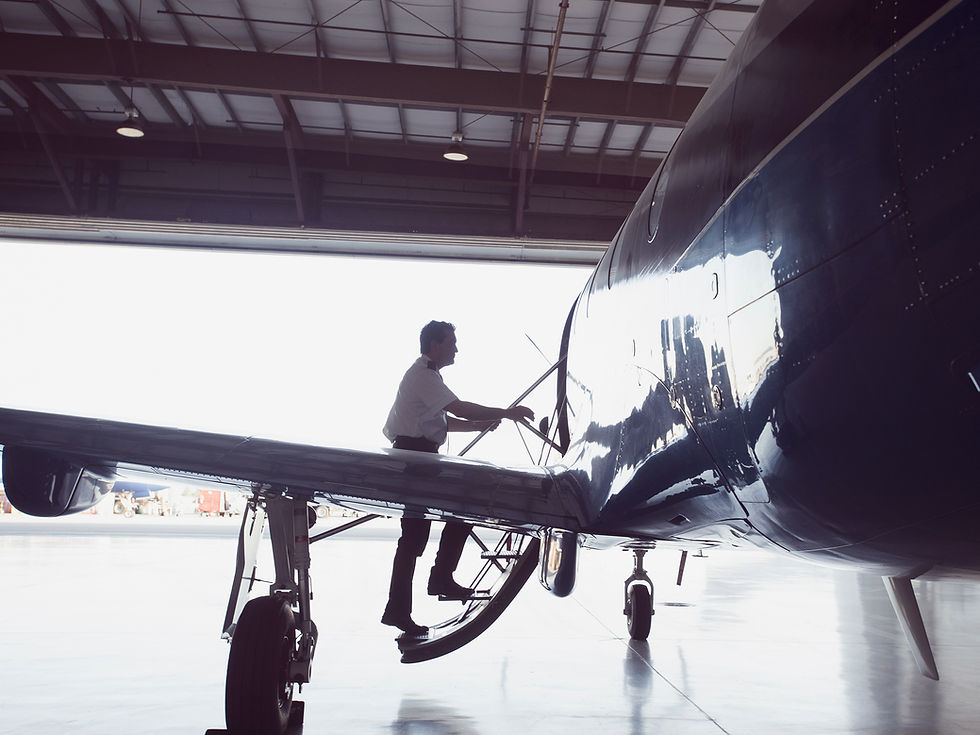Understanding the Sustainable Aviation Fuel Credit: A Guide for Taxpayers
- Rio Bayani
- Dec 6, 2024
- 3 min read
Hey there, eco-conscious taxpayers! Exciting news for the aviation industry and anyone interested in sustainable practices: the Treasury Department and the IRS have just issued new guidance on the Sustainable Aviation Fuel (SAF) credit. This credit, part of the Inflation Reduction Act, aims to promote the use of greener fuels in aviation, helping to reduce our carbon footprint. Let’s break down what this means for you and how you can benefit from it.

What is the Sustainable Aviation Fuel Credit?
The Sustainable Aviation Fuel Credit is designed to incentivize the production and use of sustainable aviation fuel, which significantly reduces greenhouse gas emissions compared to traditional jet fuels. If you’re involved in producing or using SAF, you may be eligible for a tax credit ranging from $1.25 to $1.75 per gallon for each gallon of SAF in a qualified mixture.
Key Eligibility Criteria
To qualify for the SAF credit, the fuel must meet the following conditions:
Greenhouse Gas Reduction: The sustainable aviation fuel must achieve a minimum reduction of 50% in lifecycle greenhouse gas emissions compared to conventional jet fuels. This means it must be proven to be significantly more environmentally friendly.
Qualified Mixture: The SAF must be part of a qualified mixture, meaning it needs to be blended appropriately to meet the IRS guidelines.
How Do You Calculate the Credit?
The IRS has issued several notices regarding the calculation and application of the SAF credit. Notice 2024-37, for instance, allows SAF producers to utilize the 40BSAF-GREET 2024 model to calculate the greenhouse gas emissions reduction percentage necessary for claiming the credit.
What’s New in 2024?
Recently, the Department of Energy (DOE) released an updated version of the 40BSAF-GREET 2024 model and user manual in October 2024. This updated version addresses a specific calculation issue related to catalyst inputs for the Alcohol to Jet (ATJ) SAF pathways.
Notice 2024-74 emphasizes that if you choose to use the safe harbor provided in Notice 2024-37 for calculating your emissions reduction percentage, you must use the October 2024 version of the 40BSAF-GREET model for any SAF claims made after its effective date.
Why This Matters
Using the updated model is crucial because it ensures that your calculations are accurate and compliant with the latest IRS guidance. It not only helps you claim the correct credit but also aligns your operations with federal sustainability goals, which can enhance your company’s reputation and commitment to environmental stewardship.
Steps to Claim the Credit
If you’re looking to take advantage of the SAF credit, here are some steps you can follow:
Confirm Eligibility: Ensure that the sustainable aviation fuel you are using meets the greenhouse gas reduction requirements.
Utilize the 40BSAF-GREET 2024 Model: Make sure to use the updated version of the model for accurate calculations of your emissions reductions.
Documentation: Keep detailed records of your SAF production, mixtures, and calculations. Documentation will be crucial for claiming the credit and for any potential audits.
Consult a Tax Professional: Given the complexities of tax credits, it’s always a good idea to consult with a tax advisor who has experience with energy credits and can guide you through the process.
Final Thoughts
The Sustainable Aviation Fuel Credit is a fantastic opportunity for those in the aviation and fuel industries to contribute to a greener future while also benefiting financially. By understanding the eligibility criteria, utilizing the proper models for calculations, and keeping meticulous records, you can make the most of this credit.
Stay tuned for more updates from the IRS and Treasury as they continue to roll out guidance on sustainable practices. Together, we can take steps toward a more sustainable future in aviation!
Feel free to share this information with anyone who might benefit, and let’s spread the word about the importance of sustainable aviation fuel!



Comments